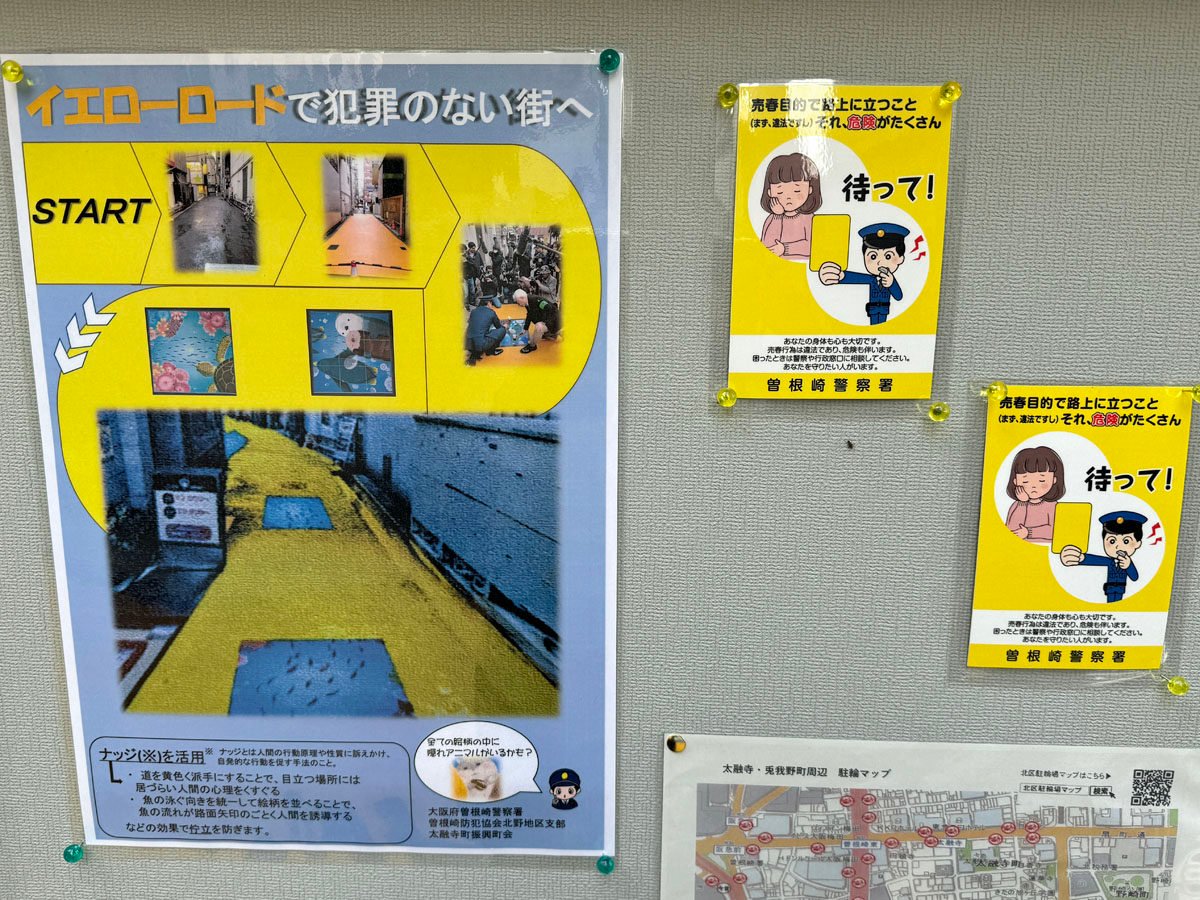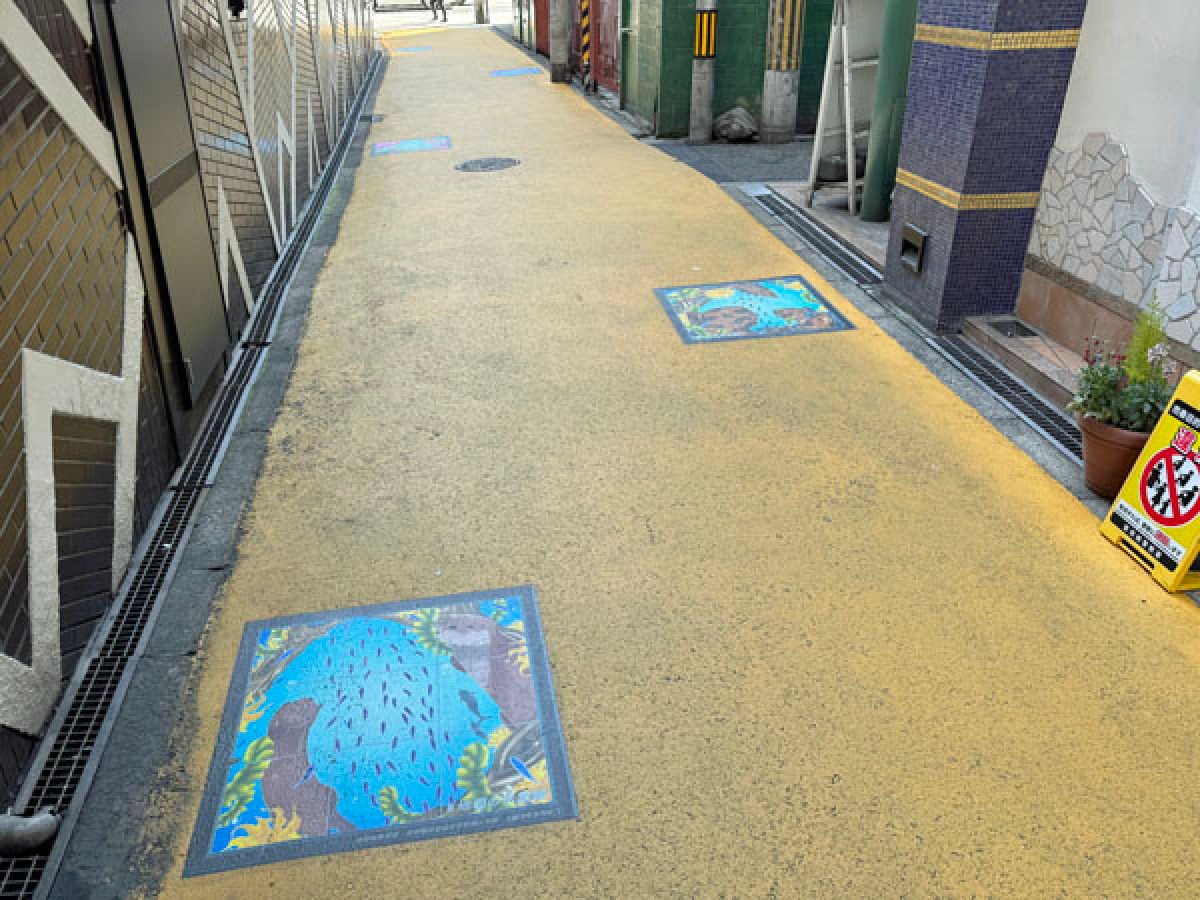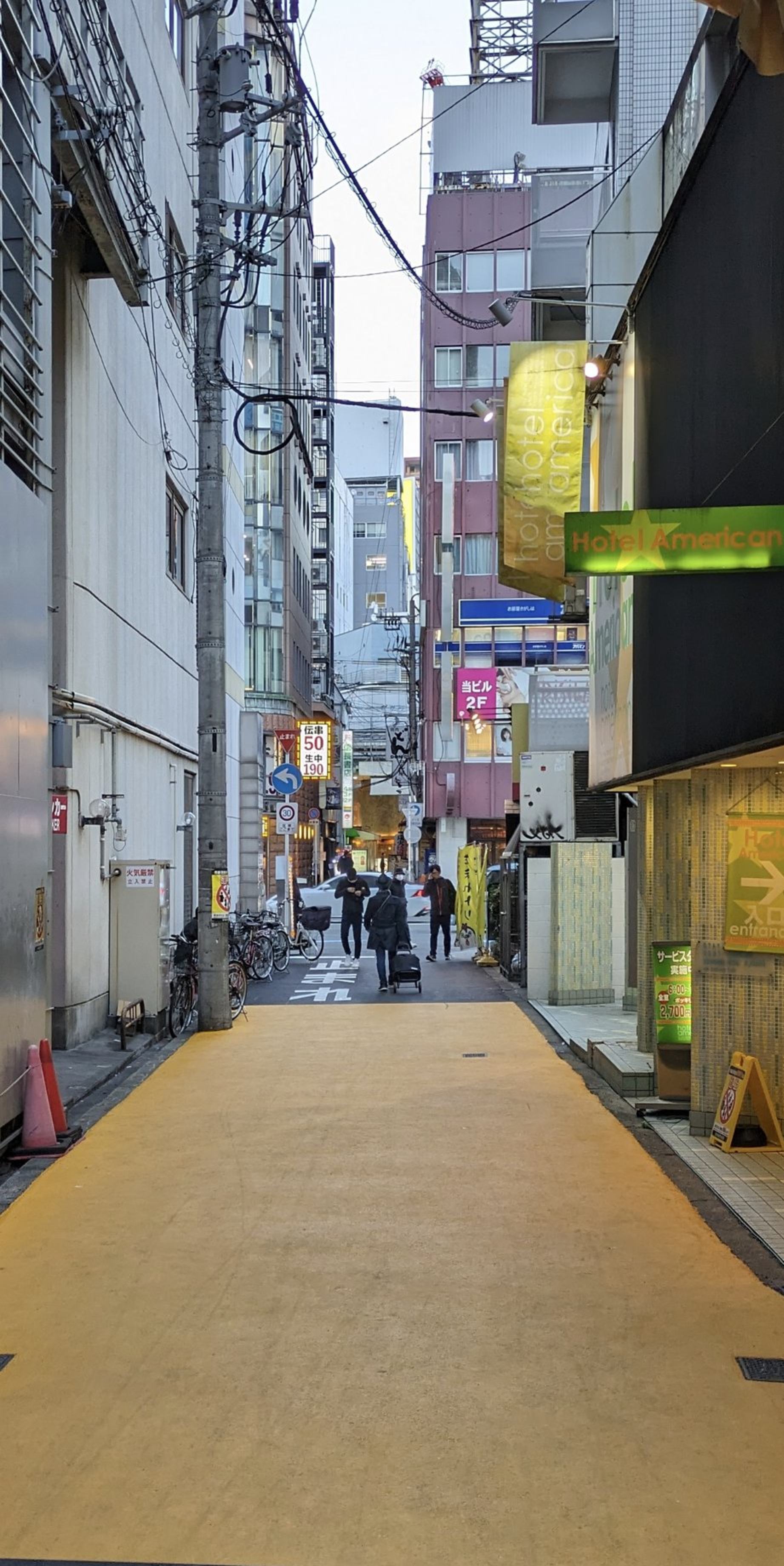Osaka’s yellow street slashes prostitution by 90% using nudge theory
Police believe the striking colour makes the streetwalkers and their potential clients feel uncomfortably conspicuous

Japanese police have found a surprising new way to curb the country’s rampant prostitution – by painting a street yellow.
The unusual tactic in Osaka has led to a dramatic 90 per cent decrease in sex workers soliciting customers in a previously notorious alley, authorities said.
Last December, the 100-metre (330-foot) street in the city’s Taiyujicho neighbourhood located near the JR Osaka Station, was painted bright yellow and decorated with colourful artwork of marine creatures.
The tactic was based on nudge theory, a concept that suggests subtle changes in surroundings can influence behaviour.
Data from four daily police surveys of the alley revealed an average of 7.43 women soliciting customers daily before the paint job, according to The Asahi Shimbun.
A week after the street was painted, this number fell to zero, and two months later, the average was just 0.86, indicating a near 90 per cent decline.

Police believe the bright hue made the streetwalkers and their potential clients feel uncomfortably conspicuous and leave the alley.
Even the artworks depict the sea creatures swimming to plant the idea of “keep moving” in people’s minds, according to Tokyo-based news site SoraNews24.
While local residents have welcomed the visual revamp, authorities acknowledge this is not a long-term solution to the country’s pervasive prostitution issue.
“An approach that focuses on making women move away from areas where they solicit customers is something of a stopgap measure,” Takeshi Haraguchi, a professor of social geography at Kobe University, told The Asahi Shimbun newspaper.
“We need to think about why women have to stand there.”
Japan has seen a worrying trend of young women turning to prostitution to survive or cover expenses incurred at so-called host clubs, This Week in Asia reported last November.

In the Osaka alley, the number of sex workers surged after the Covid-19 pandemic. Many of them kept returning to solicit customers even after being arrested.
“There was a limit when all we could do was to conduct crackdowns,” said Ryu Kitagawa, then chief of the community safety division at the police station. “It was like playing a cat-and-mouse game.”
A survey among 28 women suspected of prostitution conducted by a police station near the painted alley found that their average age was 24. Over 60 per cent of them were saddled with debts to host clubs.
The police station has since begun efforts to help streetwalkers leave the trade, connecting them to local support organisations run by the municipal government.
“We want to introduce more active countermeasures, which are not limited to crackdowns but also include establishing a system where women can receive necessary support,” an officer told The Asahi Shimbun.